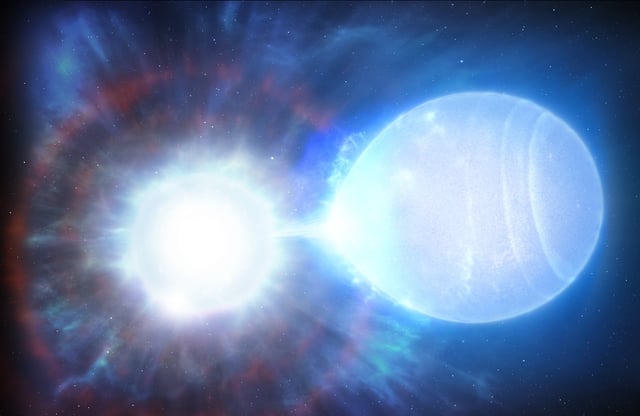Overview
- The binary system, located just 150–160 light-years away, has a combined mass of 1.56 solar masses, exceeding the Chandrasekhar limit necessary for a Type Ia supernova.
- The two white dwarfs orbit each other at a distance of 1/60th the Earth-Sun separation, completing an orbit every 14 hours in a decaying trajectory.
- The supernova will occur through a double detonation mechanism, where mass transfer triggers a series of rapid explosions annihilating both stars in seconds.
- This marks the first concrete observational confirmation of theoretical predictions that double white dwarf binaries can lead to Type Ia supernovae.
- The explosion, expected to occur in 23 billion years, would appear 10 times brighter than the full moon from Earth but poses no threat due to its timing and distance.
